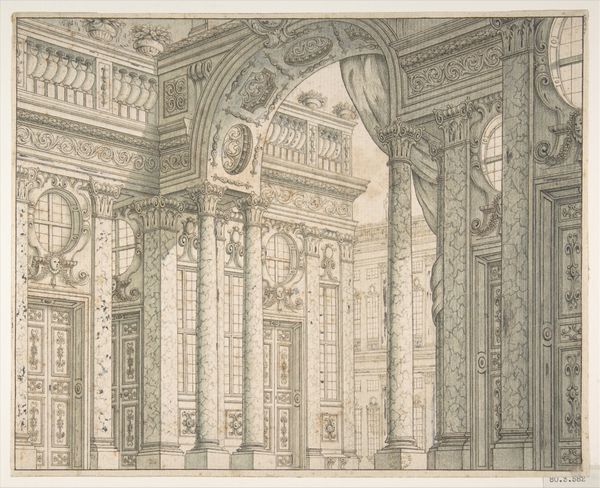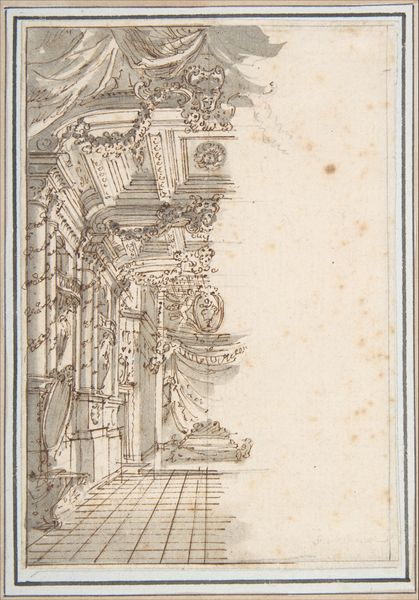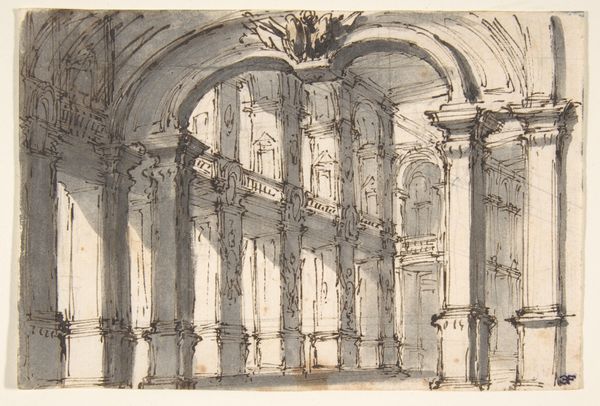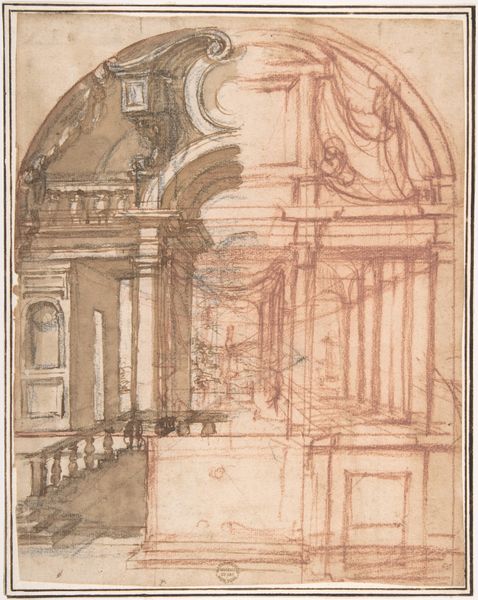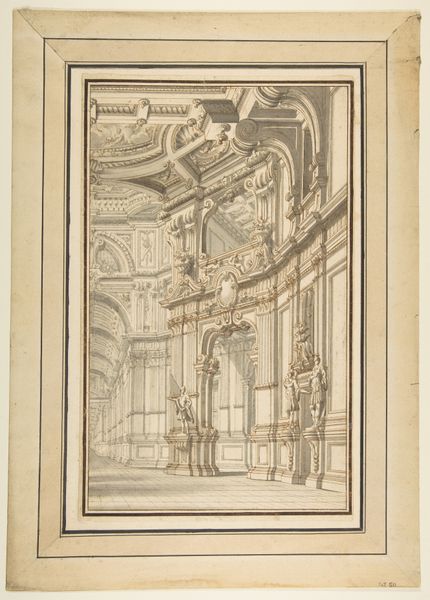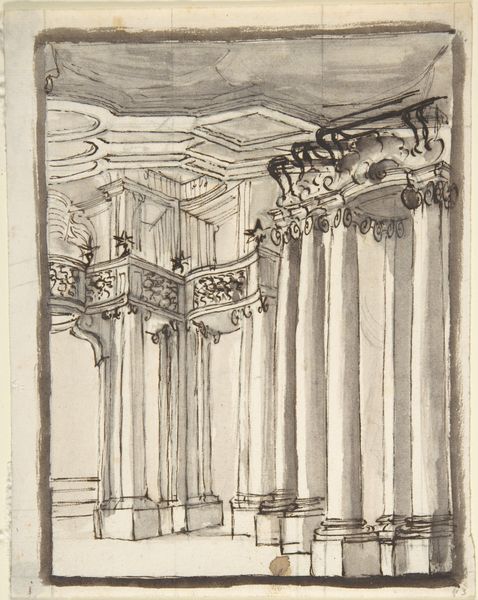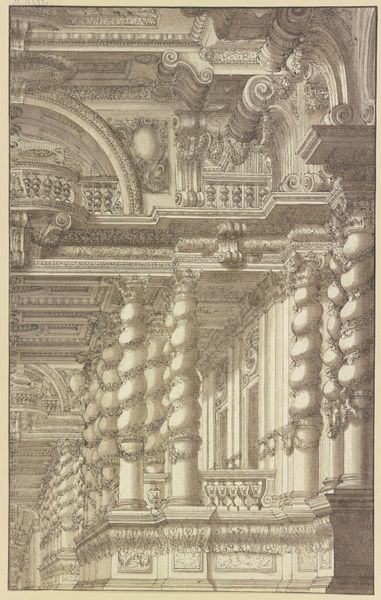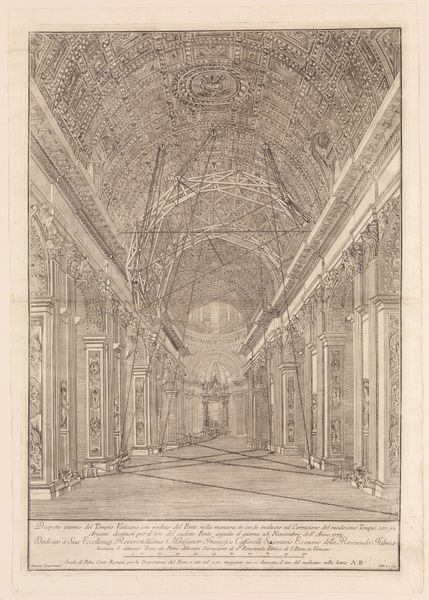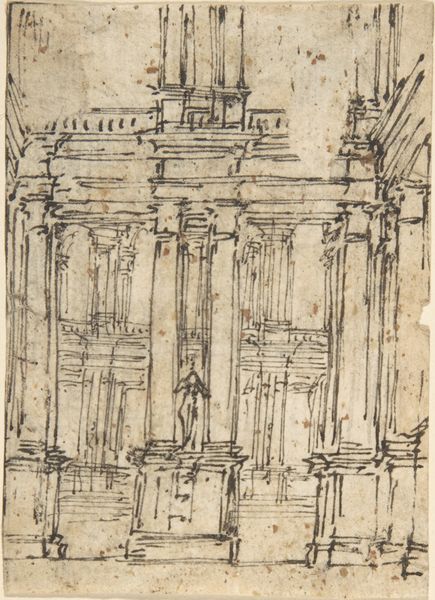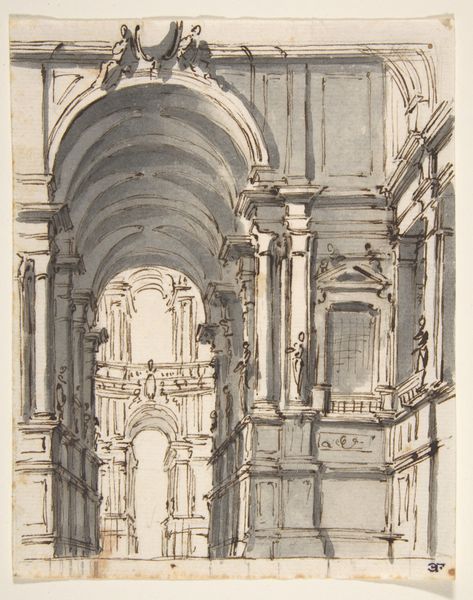
Design for a Stage Set: Interior of a Ballroom or Theater with Torqued Columns and Large Volutes Above. 1676 - 1736
0:00
0:00
drawing, print, ink, architecture
#
pen and ink
#
drawing
#
toned paper
#
ink drawing
#
baroque
# print
#
pen sketch
#
etching
#
ink
#
sketchwork
#
ink drawing experimentation
#
column
#
pen-ink sketch
#
line
#
pen work
#
sketchbook art
#
architecture
Dimensions: sheet: 8 5/8 x 7 7/16 in. (21.9 x 18.9 cm)
Copyright: Public Domain
Curator: Looking at this stage design by Francesco Galli Bibiena, dated sometime between 1676 and 1736, one immediately senses a profound grandeur. Editor: Yes, there is an almost overwhelming theatricality to this rendering, wouldn't you say? It feels less like a real space and more like a backdrop for high drama. The sheer number of columns and the dramatically torqued capitals are very striking. Curator: Precisely. Notice how Bibiena uses line and tone, with pen and ink on toned paper, to create depth and a sense of receding space. The use of etching also really emphasizes these aspects, adding great visual interest and dynamism to this composition. This allows him to establish a complex interplay of light and shadow across the architectural features. The rhythmic repetition of the columns, those almost cartoonish volutes... the sheer visual energy makes the Baroque exuberance nearly palpable! Editor: Thinking about theater designs in this period, it's clear that these sets weren’t merely decorative. They helped in building the power of rulers. The aristocracy would present their narratives through theatrical forms, thus architectural marvels reflected in stage design functioned as stages for promoting their own self-image. They actively shaped perceptions of authority and magnificence, embedding societal hierarchies through dramatic imagery. Curator: An astute point. Furthering the thought: look at how the architectural details themselves are designed to impress. The towering columns, the intricate decorations, they aren't just structurally functional, they symbolize stability and power. Editor: But also, this sketch exemplifies experimentation. It serves not just a functional purpose for planning a set; instead, we can view it as an exercise in exploring perspectives, something we see in so much sketchbook art. It's an important work in that it gives insight into Bibiena's conceptual practice. Curator: Well observed. I concur that it also transcends its function, capturing the architectural design both formally and as part of historical artistic praxis. Editor: So next time you find yourself seated in the orchestra, take a moment to think about the sociopolitical narratives playing out within these constructed realms! Curator: Indeed. It’s a reminder that art is not simply beheld; it actively participates in broader discourse.
Comments
No comments
Be the first to comment and join the conversation on the ultimate creative platform.
